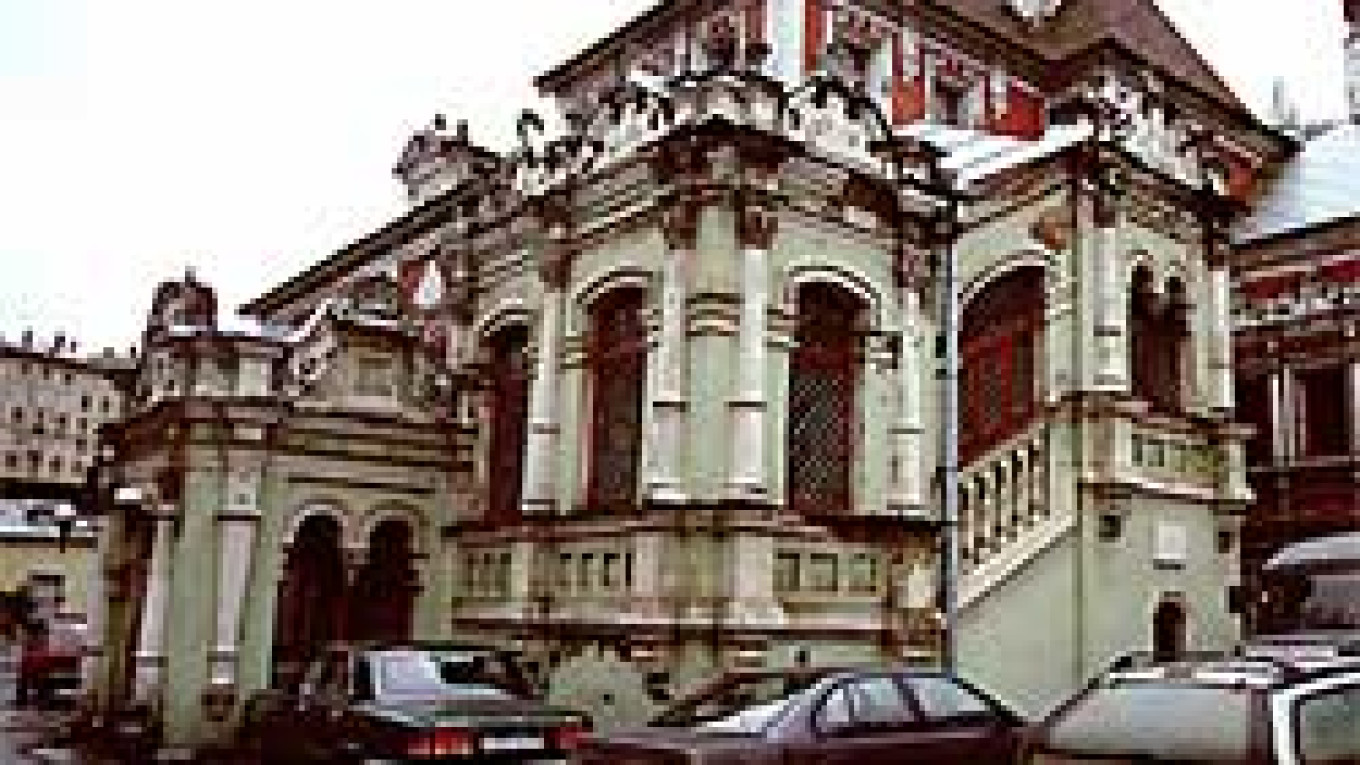The powerful and influential have resided in its rooms and wandered in its gardens, including Ivan the Terrible and a very young Alexander Pushkin.
The last owner was Prince Felix Yusupov, who went down in history as the murderer of Rasputin. In one of the few historical references of the building's beginnings, he wrote in his memoirs that Ivan the Terrible used to relax here after his hunting trips, feasting luxuriously before slipping back to the Kremlin by underground tunnel.
According to Prince Yusupov, his parents discovered the tunnel during renovations of the house. During those renovations, a long corridor full of skeletons chained to the walls, compliments of the tsar, was also discovered. The Yusupov family never fancied the place and when visiting Moscow from St. Petersburg, they preferred to stay in the house's numerous wings or outbuildings, saving the chambers exclusively for gala receptions.
In general, the architects of the country's palaty, or chambers, remain anonymous, and the buildings are named after their wealthy owners. History supposes that the Volkov-Yusupov chambers were built by Barma and Postnik, the famous duo who also created St. Basil's Cathedral. (The legend turns ugly however; the architects had their eyes gouged out, their arms cut off, and their tongues torn out on orders from Ivan the Terrible, who was so stunned by the church's beauty that he did not want them to ever again create something so wonderful.)
Decorated in the Moscow baroque style, the house comprises two buildings, which were united only at the end of the 18th century. The ground floor of the right chamber is thought to be the oldest part, containing a living room, dining room, bedroom and chapel. A ballroom of about 170 square meters was intended for feasts and receptions and a stone staircase, which survives today, led from it.
Still visible above the front door are traces of where icons of St. Boris and St. Gleb hung.
The upstairs floor plan mirrors the lower one, while the basement floors were once huge cellars replete with barrels of imported wines, Russian honey and berry kvass.
At one time surrounded by a huge park with a pond, the building has massive walls, up to two meters thick, and small windows. Durability and safety were the words of the day during construction.
Major renovations continued until the 1940s. At the turn of the century, a third floor was added and the facade's already intricate decorations were enriched with weathercocks on the roof and a porch on the western side. The stone fence, built in 1913, has a gate with the Yusupov coat of arms.
Ownership of the chambers switched hands several times over the course of the 17th and 18th centuries with the building serving as a symbol of the power struggle for the throne. At one time it was owned by an associate of Peter the Great, a deputy chancellor who was later charged with embezzlement of state property. In 1723 the house was confiscated and given to Count Peter Tolstoy, manager of the Secret Chancellory and head of the committee investigating the death of Peter the Great's son, Prince Alexei.
At odds with the tsar's favorite, Alexander Menshikov, Tolstoy was exiled to the Solovki Islands and the house went to Menshikov's faithful secretary, Alexei Volkov. But Volkov was the owner for less than six months, as his boss suffered a blow in the power struggle and lost all his property. In his place came Grigory Dmitriyevich Yusupov, who, incidentally, had pleaded Menshikov's case. For two centuries beginning in November 1727, the place belonged to the influential Yusupov family.
Prince Nikolai Yusupov, manager of the royal theaters, would rent out his Moscow house to tenants, including one wing to amateur actor Sergei Pushkin from 1801 to 1803. The future poet Alexander roamed its gardens full of small alleys, grottos and statues. The lasting impression on the little boy is evidenced in his poem "Eugene Onegin." It was at the old relative's house where the Larins stayed when they came to Moscow to search for a good match for Tatyana.
The family lost the house after 1917 and the Military-Historical Museum moved in. For a short time it housed the Chekhov Museum and, since 1928, various agricultural organizations have taken up residence. Famous geneticist Nikolai Vavilov worked here, only to later be tortured to death in Stalin's labor camps.
A Message from The Moscow Times:
Dear readers,
We are facing unprecedented challenges. Russia's Prosecutor General's Office has designated The Moscow Times as an "undesirable" organization, criminalizing our work and putting our staff at risk of prosecution. This follows our earlier unjust labeling as a "foreign agent."
These actions are direct attempts to silence independent journalism in Russia. The authorities claim our work "discredits the decisions of the Russian leadership." We see things differently: we strive to provide accurate, unbiased reporting on Russia.
We, the journalists of The Moscow Times, refuse to be silenced. But to continue our work, we need your help.
Your support, no matter how small, makes a world of difference. If you can, please support us monthly starting from just $2. It's quick to set up, and every contribution makes a significant impact.
By supporting The Moscow Times, you're defending open, independent journalism in the face of repression. Thank you for standing with us.
Remind me later.


